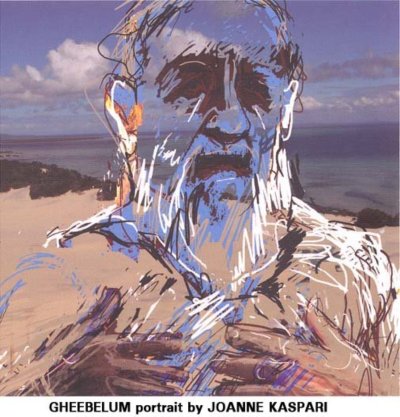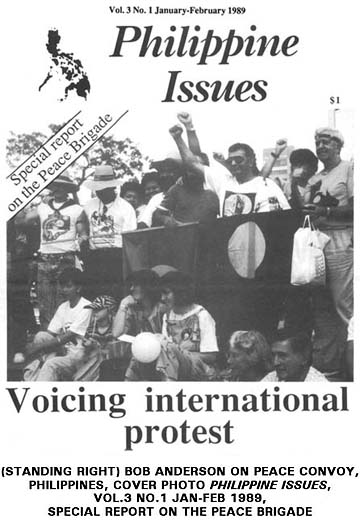
 In 1951 the Queensland Government leased 12 hectares on Mulgumpin for 30 years to a whaling company. In 1955 sand mining commenced on the north-eastern side of the island and by 1957 a processing plant was set up near Tangalooma Point. The operation was not profitable and closed down, but some small scale excavation continued. In 1962 Whale Industries Ltd realised their inability to meet quota was due to the scarcity of whales as a result of over ‘harvesting’, and in ‘63 the Tangalooma Whaling Station was sold for tourism development. That year the first land sales took place at Kooringal; many lots were bought by mainlanders with speed boats. Mulgumpin’s first National Park was declared in 1966. The state government released more land for sale by auction in 1967.
The Ramsar Wetland Convention 1971, listed parts of Moreton Bay as wetlands of international importance. In 1974 the Queensland Government transferred control of the island to Brisbane City Council. The Moreton Island Protection Committee was formed in 1978 to oppose sand mining and preserve the island as a natural place. Today, 98% of Mulgumpin is National Park and its surrounding waters are part of the Moreton Bay Marine Park.
The Quandamooka Lands Council was formed in 1990 and the Minjerribah-Moorgumpin Elders Council in ‘93. In 1995 the Quandamooka Lands Council’s application for a determination of native title was accepted by the National Native Title Tribunal. The legal process is ongoing.
In 1951 the Queensland Government leased 12 hectares on Mulgumpin for 30 years to a whaling company. In 1955 sand mining commenced on the north-eastern side of the island and by 1957 a processing plant was set up near Tangalooma Point. The operation was not profitable and closed down, but some small scale excavation continued. In 1962 Whale Industries Ltd realised their inability to meet quota was due to the scarcity of whales as a result of over ‘harvesting’, and in ‘63 the Tangalooma Whaling Station was sold for tourism development. That year the first land sales took place at Kooringal; many lots were bought by mainlanders with speed boats. Mulgumpin’s first National Park was declared in 1966. The state government released more land for sale by auction in 1967.
The Ramsar Wetland Convention 1971, listed parts of Moreton Bay as wetlands of international importance. In 1974 the Queensland Government transferred control of the island to Brisbane City Council. The Moreton Island Protection Committee was formed in 1978 to oppose sand mining and preserve the island as a natural place. Today, 98% of Mulgumpin is National Park and its surrounding waters are part of the Moreton Bay Marine Park.
The Quandamooka Lands Council was formed in 1990 and the Minjerribah-Moorgumpin Elders Council in ‘93. In 1995 the Quandamooka Lands Council’s application for a determination of native title was accepted by the National Native Title Tribunal. The legal process is ongoing.
 At the opening of the MIL BINNUNG exhibition COLLEEN MA’RUN WALL a Dauwa-Kabi woman from the Mt. Bauple-Gympie-Kilkivan area, presented the cultural ceremony. She spoke of her people’s story of the formation of land and water and the significance of acknowledgment. She thanked the ancestors for keeping this land healthy for all these thousands of years and for tolerating so many of us to live on their place. Colleen, a ‘sand goanna’ woman, thanked “our dearest Uncle, Grandfather Gheebelum”, this ‘sandhill man’, for his faith in her to undertake a cultural ceremony on his behalf.
As well as Aboriginal elders from Quandamooka and from the mainland, there were also Federal, State and Local Government elected representatives, council officers, officers of the Redland, North Stradbroke, and Queensland Museums, trade union colleagues, community activists, family and friends. We all came to celebrate the achievements of this remarkable man “known widely as Uncle Bob”.
Bob Anderson began his working life in 1942 at the age of 13, going on to complete an apprenticeship in carpentry and in 1951 he joined the BWIU (Building Workers' Industrial Union, now the Construction, Forestry, Mining and Energy Union - CFMEU). From 1963-1977 Bobby was a BWIU State Organiser and was a delegate to the Queensland Trades and Labour Council (now the Queensland Council of Unions). Among his trade union mates he’s known as Bobby.
In 2000, Bobby received an honorary doctorate from Queensland University of Technology, in this capacity he is known as Dr. Robert Anderson. For distinguished service in promoting reconciliation in Queensland, he received both a Centenary Medal and an Order of Australia Medal in 2001. The list of the various boards and committees on which Uncle Bob has served is impressive to say the least. At the Mil Binnung exhibition Cameron Dick, the state member for Greenslopes, Attorney General of Queensland and Minister for Industrial Relations said, “Uncle Bob’s community involvement which ranges over seven decades from the 1940s until the current day, is proof that he is a man filled with restless agitation to improve the lives of not just indigenous Queenslanders but to improve the lives of all in our State and nation.”
We are immensely proud to have Bob Anderson as a Life Member of SPAN. He has been a reference point for our organisations’ work and his guidance and advice is invaluable. On behalf of both SPAN and CPCA-Brisbane may we add our appreciation and acknowledgment for all the help and the wealth of friendship you have given us.
Maraming salamat sa iyong pakikiisa sa sambayang Pilipino. Mabuhay ka Uncle Bob!
At the opening of the MIL BINNUNG exhibition COLLEEN MA’RUN WALL a Dauwa-Kabi woman from the Mt. Bauple-Gympie-Kilkivan area, presented the cultural ceremony. She spoke of her people’s story of the formation of land and water and the significance of acknowledgment. She thanked the ancestors for keeping this land healthy for all these thousands of years and for tolerating so many of us to live on their place. Colleen, a ‘sand goanna’ woman, thanked “our dearest Uncle, Grandfather Gheebelum”, this ‘sandhill man’, for his faith in her to undertake a cultural ceremony on his behalf.
As well as Aboriginal elders from Quandamooka and from the mainland, there were also Federal, State and Local Government elected representatives, council officers, officers of the Redland, North Stradbroke, and Queensland Museums, trade union colleagues, community activists, family and friends. We all came to celebrate the achievements of this remarkable man “known widely as Uncle Bob”.
Bob Anderson began his working life in 1942 at the age of 13, going on to complete an apprenticeship in carpentry and in 1951 he joined the BWIU (Building Workers' Industrial Union, now the Construction, Forestry, Mining and Energy Union - CFMEU). From 1963-1977 Bobby was a BWIU State Organiser and was a delegate to the Queensland Trades and Labour Council (now the Queensland Council of Unions). Among his trade union mates he’s known as Bobby.
In 2000, Bobby received an honorary doctorate from Queensland University of Technology, in this capacity he is known as Dr. Robert Anderson. For distinguished service in promoting reconciliation in Queensland, he received both a Centenary Medal and an Order of Australia Medal in 2001. The list of the various boards and committees on which Uncle Bob has served is impressive to say the least. At the Mil Binnung exhibition Cameron Dick, the state member for Greenslopes, Attorney General of Queensland and Minister for Industrial Relations said, “Uncle Bob’s community involvement which ranges over seven decades from the 1940s until the current day, is proof that he is a man filled with restless agitation to improve the lives of not just indigenous Queenslanders but to improve the lives of all in our State and nation.”
We are immensely proud to have Bob Anderson as a Life Member of SPAN. He has been a reference point for our organisations’ work and his guidance and advice is invaluable. On behalf of both SPAN and CPCA-Brisbane may we add our appreciation and acknowledgment for all the help and the wealth of friendship you have given us.
Maraming salamat sa iyong pakikiisa sa sambayang Pilipino. Mabuhay ka Uncle Bob! Dee Dicen Hunt & Emere Distor
Related Article:
 Home | Aims and Objectives of Solidarity Philippines Australia Network | About Kasama
Home | Aims and Objectives of Solidarity Philippines Australia Network | About Kasama 
Search the SPAN Web